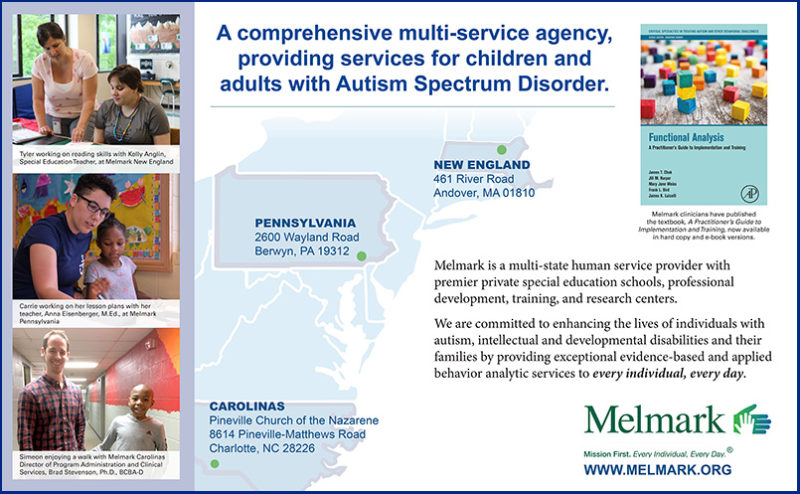In recent years, there has been a large focus on understanding how trauma interacts with other factors to create unique vulnerabilities in people. Individuals who have experienced intense or frequent adverse childhood experiences (ACEs) exhibit more health and behavioral difficulties throughout their lives (e.g. Centers for Disease Control, 2016; Felitti, et al., 1998; American Psychiatric Association, 2013; Substance Abuse and Mental Health Services Administration, 2018). Traumatic events include: neglect, experiencing or witnessing physical, sexual, and/or emotional abuse, living with a family member with substance addiction or severe mental illness, and losing a family member to death, incarceration, or abandonment (ACES, 1997). Indeed, these events have been identified as being associated with traumatic risk, especially in the context of understanding the lingering effects of trauma across the lifetime. Those with a strong history of ACEs may have higher incidences of challenging behaviors in school, may have an increased risk for drug abuse in adulthood, and may be at high risk for negative health consequences and premature death (e.g. Szymanski & Conway, 2011; SAMHSA, 2018; CDC, 2016). Mental health professionals have been discussing the impact of ACES and of trauma on many different populations, including children. Many school and family counselors work to support individuals with these histories and with their families to support them safely (Hunt, Slack, & Berger, 2017).
This awareness has been extended to individuals with disabilities. There is an increased incidence of ACES in individuals with intellectual or developmental impairments. Indeed, the lifetime rate for these events among those with disabilities is three times that of the general population (Horner-Johnson & Drum, 2006). Underreporting is also likely, given the communicative deficits associated with disabilities (Horner-Johnson & Drum, 2006). So, individuals with autism and other developmental disabilities are at great risk for adverse events that can be traumatic, and for the long-term effects of trauma. This is a relatively new focus for most service providers who specialize in the treatment of individuals with autism.
A set of approaches known as trauma-informed care (TIC) has been proposed to address the unique needs of individuals who have this history. TIC advises taking past ACEs into consideration in assessment and treatment planning. TIC is a philosophy of care, leading to a cultural change in the delivery of intervention and the treatment of clients (SAMHSA, 2018). Professionals using TIC are encouraged to treat clients with ACEs backgrounds in a framework of “What happened to you?” instead of “What’s wrong with you?” Such a lens helps to promote awareness and sensitivity to the lasting effects of traumatic events on the individual (SAMHSA, 2018).
Individuals with disabilities may have traumatic experiences that stem from treatment, as well as events that are independent of the treatment context. Within treatment, there may have been instances of restraint or seclusion that triggered trauma. While clinical guidelines and safeguards exist for the use of such procedures (APBA, 2016), they are relatively recent, they are not universally followed, and they may not prevent trauma for especially vulnerable individuals. Perhaps more importantly, assessment and treatment must be tailored to ensure that trauma has been considered and that appropriate modifications have been embedded into individualized plans (Kolu, 2018;2019). Issues such as a history of food insecurity, sexual abuse, or neglect must be considered as reinforcement, redirection, or monitoring procedures are selected. In many ways, trauma-informed care is an additional lens through which clients are viewed, and thorough which assessment and treatment is planned.
Given the increasing impact of trauma on childhood experiences, many regulators and funders have begun requiring organizations who provide behavioral health services to adapt treatment packages to include TIC (Center for Health Care Strategies, 2017). Integration of TIC requires organizations to evaluate and potentially change current processes both at the organization level and clinical level (Menschner & Maul, 2016). At the organizational level, Menschner and Maul (2016) discuss “key ingredients” for organizations to be successful with the integration of TIC. One key ingredient is the need for senior leaders to be involved throughout the integration process. Unick, Bassuk, Richard and Paquette (2019) suggest organizations start by assessing how trauma affects the organization, including both individuals served and the employees. In addition, an assessment should include to what extent the current mission/vision, policies and procedures support TIC. Understanding these components assists organizations with the development of an infrastructure for guiding and supporting change (Substance Abuse and Mental Health Services Administration, 2014).
A second key ingredient discussed by Menschner and Maul (2016) is the need for training. Substance Abuse and Mental Health Services Administration (2014) suggests training at all levels regardless of prior experience with TIC. Training for administrator and direct care staff should include the effects trauma can have on an individual and how to avoid retraumtization. Training for clinical level staff should include more in-depth training on evidence-based practices and interventions for treatment. Throughout the integration process and after, organizations should continue to collect data on the ongoing impact of trauma training efforts. A systematic review conducted by Purtle (2018), found TIC interventions had a more meaningful impact on client outcomes when the training package included components such as the inclusion of competency-based tools for assessment of training participants, review of policies to ensure they align with trauma informed practices and ongoing research on interventions, participant and client outcomes.
Menschner and Maul (2016) also discuss the importance of a comprehensive clinical approach to treating trauma. “Upfront and universal” screening procedures are suggested to provide a screening process with less racial/ethnic bias, to better understand the client’s trauma history, and to help target treatment interventions (Menschner and Maul, 2016). Bassuk, Richard and Paquette (2019) also found the involvement of the “service user” model to be very beneficial to the success of the organization. When “service users” feel their feedback is being heard, their outcomes are improved (Bassuk Richard, & Paquette, 2019). Meaningful involvement includes contributing to the organization’s policies and procedures, and to their own treatment, through methods such as self-assessment.
Furthermore, Substance Abuse and Mental Health Services Administration (2014) suggests a peer support network aids greatly in the treatment of trauma. Peer support provides an abundance of opportunities for personal growth and support through activities such as: crisis management, recovery, advocacy, modeling, and encouraging and facilitating empowerment, collaboration and empathy (Substance Abuse and Mental Health Services Administration, 2014). The key element to this component of intervention is access to empathic support. This can be provided through a group of peers, through a selected peer, or by a trusted staff member.
Earl et al. (2017) propose several strategies specific to the Autism Spectrum Disorder (ASD) population and effective trauma treatment. Since individuals living with ASD may have difficulties with verbal and abstract reasoning, using visual stimuli, providing coping skill training, and helping to identify triggers and/or trauma cues are recommended treatment elements (Earl et al., 2017). Creating a “trauma narrative,” which helps with cognitive processing, and then teaching when, where and with whom it is safe to share this narrative, are also important elements of treatment for individuals with ASD. Earl et al. (2017) further encourage the trauma narrative to be created in ways that are appealing and understandable to individuals with ASD, such as using visual aids, structured play scenarios, and/or creating a story. Earl et al. (2017) also stress the use of “in-vivo exposure to trauma reminders” as a viable therapy option. Presenting exposure in a scaffolding approach, creating step-by step plan for exposure, developing contingency plans, and incentivizing exposure practice are suggested in-vivo accommodations for individuals with ASD.
The awareness of trauma and its impact on individuals has increased tremendously in recent years, and this has recently been extended into care planning for individuals with disabilities. The prevalence of adverse events, and the concomitant trauma, is recognized, and treatment that is tailored to these needs is increasingly common. The tenets of compassionate care can easily be integrated with the principles of trauma-informed care, and TIC provides a natural extension of the humane care provided to individuals with disabilities. Furthermore, the individualization that defines a behavior analytic approach to the care of individuals with disabilities is entirely congruent with the highly individualized assessment and treatment needed to meet the needs of those with traumatic experiences. The evidence-based strategies that have been identified as effective for individuals with autism can be used in the context of TIC, and can ensure that treatment is a delivered in a manner that is comprehensible, supportive, and humane. The integration of TIC presents an opportunity for intervention to be even more specifically individualized and tailored to the unique needs, history, and strengths of each and every individual.
Mary Jane Weiss Ph.D., BCBA-D, LABA, is Senior Director of Research, Jennifer Mucellin, MA, BCBA is Director of Operations Children’s RTF, and Jennifer Ruane, MS, BCBA, LPC is Director of Professional Development and Clinical Training at Melmark.
References
American Psychiatric Association. (2013). Diagnostic and statistical manual of mental disorders. (5th ed.). Arlington, VA: American Psychiatric Publishing. Mar 25, 201
Association of Professional Behavior Analysts. (2016). Identifying Applied Behavior Analysis Interventions. Retrieved 7/25/19 from: https://cdn.ymaws.com/www.apbahome.net/resource/collection/1FDDBDD2-5CAF-4B2A-AB3F-DAE5E72111BF/APBAwhitepaperABAinterventions.pdf
Bassuk, E. L., Unick, G. J., Paquette, K., & Richard, M. K. (2017). Developing an instrument to measure organizational trauma-informed care in human services: The TICOMETER. Psychology of violence, 7(1), 150. http://dx.doi.org/10.1037/vio0000030
Centers for Disease Control and Prevention (CDC). “About Adverse Childhood
Experiences.” Centers for Disease Control and Prevention, Centers for Disease Control and Prevention, 1 Apr. 2016, www.cdc.gov/violenceprevention/acestudy/about_ace.html.
Center for Healthcare Strategies. (2017, September). State and federal support for trauma-informed care: sustaining the momentum. https://www.chcs.org/state-federal-support-trauma-informed-care-sustaining-momentum/
Earl, R.K., Peterson, J., Wallace, A.S., Fox, E., Ma, R., Pepper, M., & Haidar, G. (2017). Trauma and autism spectrum disorder; a reference guide. University Washington. https://depts.washington.edu/uwhatc/PDF/TF-%20CBT/pages/1%20Therapist%20Resources/Bernier-Lab-UW-Autism-Spectrum-Disorder-Reference-Guide-2017.pdf
Felitti, V. J., Anda, R. F., Nordenberg, D., Williamson, D. F., Spitz, A. M., Edwards, V.& Marks, J. S. (1998). Relationship of childhood abuse and household dysfunction to many of the leading causes of death in adults: The Adverse Childhood Experiences (ACE) Study. American journal of preventive medicine, 14(4), 245-258.
Horner‐Johnson, W., & Drum, C. E. (2006). Prevalence of maltreatment of people with intellectual disabilities: A review of recently published research. Mental retardation and developmental disabilities research reviews, 12(1), 57-69.
Hunt, T. K., Slack, K. S., & Berger, L. M. (2017). Adverse childhood experiences and behavioral problems in middle childhood. Child Abuse & Neglect, 67, 391-402.
Kolu, T.C. (2018). Introduction to Ethics of Trauma-Informed Behavior Analysis [Webinar].
Kolu, T.C. (2019, Sept. 27). Seeing Snakes and Spiders. Trauma-Informed Behavior Analysis, CuspEmergence.com. https://cuspemergence.com/2019/09/27/seeing-snakes-and-spiders/
Menschner, C., & Maul, A. (2016). Key ingredients for successful trauma-informed care implementation. Trenton: Center for Health Care Strategies, Incorporated. http://www.chcs.org/media/Brief-Key-Ingredients-for-TIC-Implementation-1.pdf
Purtle, J. (2020). Systematic review of evaluations of trauma-informed organizational interventions that include staff trainings. Trauma, Violence, & Abuse, 21(4), 725-740. https://doi.org/10.1177%2F1524838018791304
Substance Abuse and Mental Health Services Administration. (2014). Trauma-Informed Care in Behavioral Health Services. Treatment Improvement Protocol (TIP) Series 57. https://store.samhsa.gov/product/TIP-57-Trauma-Informed-Care-in-Behavioral-Health-Services/SMA14-4816
Substance Abuse and Mental Health Services Administration: A Guide to SAMHSA’s Strategic Prevention Framework. (2019). Center for Substance Abuse Prevention. Substance Abuse and Mental Health Services Administration.. https://www.samhsa.gov/sites/default/files/20190620-samhsa-strategic-prevention-framework-guide.pdf
Szymanski, K. & Conway, F. (2011). Trauma and ADHD–association or diagnostic confusion? A clinical perspective. Journal of Infant, Child, and Adolescent Psychotherapy, 10(1), 51-59.









